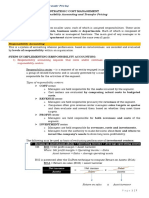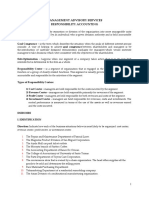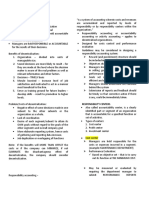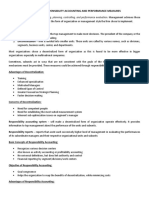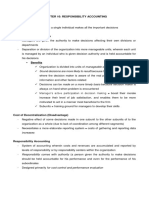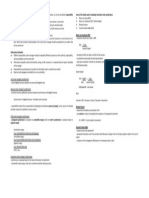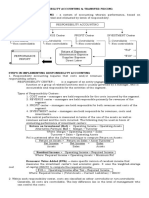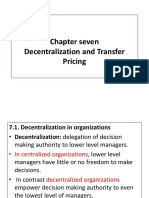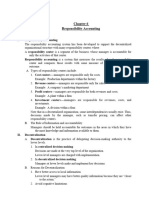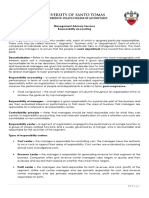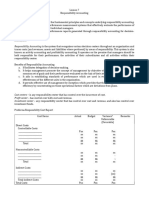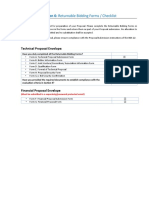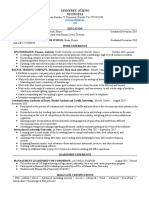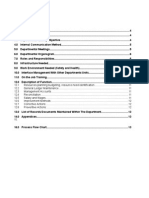0% found this document useful (0 votes)
27 views4 pagesResponsibility Accounting
Responsibility accounting divides organizations into smaller units, each with assigned responsibilities, including cost centers, revenue centers, profit centers, and investment centers, to ensure managers align with overall goals. Decentralization enhances responsiveness to market changes by delegating decision-making to managers closer to operations, while controllability principles dictate accountability for results within managers' control. The document also discusses performance evaluation metrics like ROI, residual income, and economic value added (EVA) to assess the effectiveness of investment centers.
Uploaded by
Julie Ann llorenCopyright
© © All Rights Reserved
We take content rights seriously. If you suspect this is your content, claim it here.
Available Formats
Download as DOCX, PDF, TXT or read online on Scribd
0% found this document useful (0 votes)
27 views4 pagesResponsibility Accounting
Responsibility accounting divides organizations into smaller units, each with assigned responsibilities, including cost centers, revenue centers, profit centers, and investment centers, to ensure managers align with overall goals. Decentralization enhances responsiveness to market changes by delegating decision-making to managers closer to operations, while controllability principles dictate accountability for results within managers' control. The document also discusses performance evaluation metrics like ROI, residual income, and economic value added (EVA) to assess the effectiveness of investment centers.
Uploaded by
Julie Ann llorenCopyright
© © All Rights Reserved
We take content rights seriously. If you suspect this is your content, claim it here.
Available Formats
Download as DOCX, PDF, TXT or read online on Scribd
/ 4



